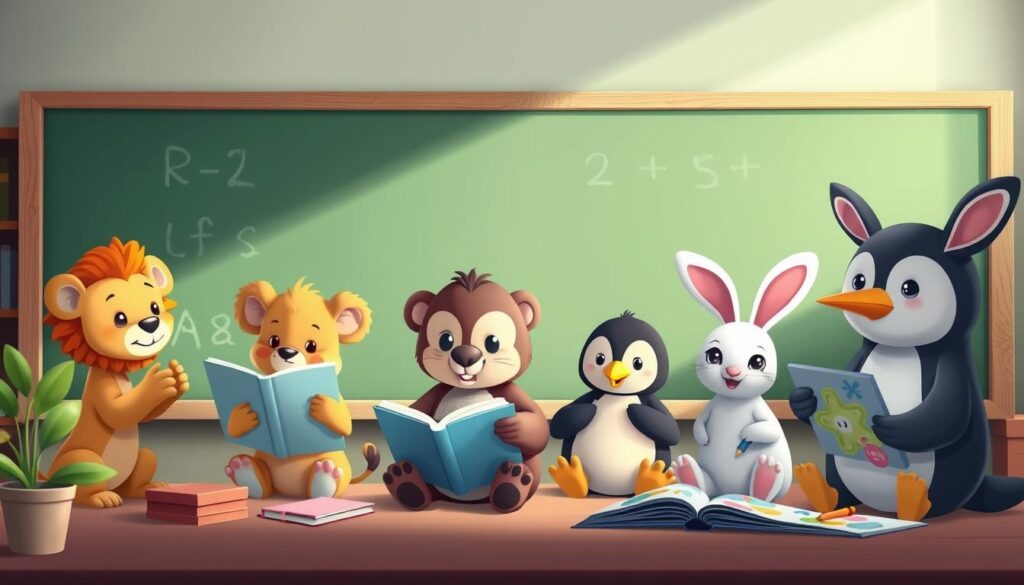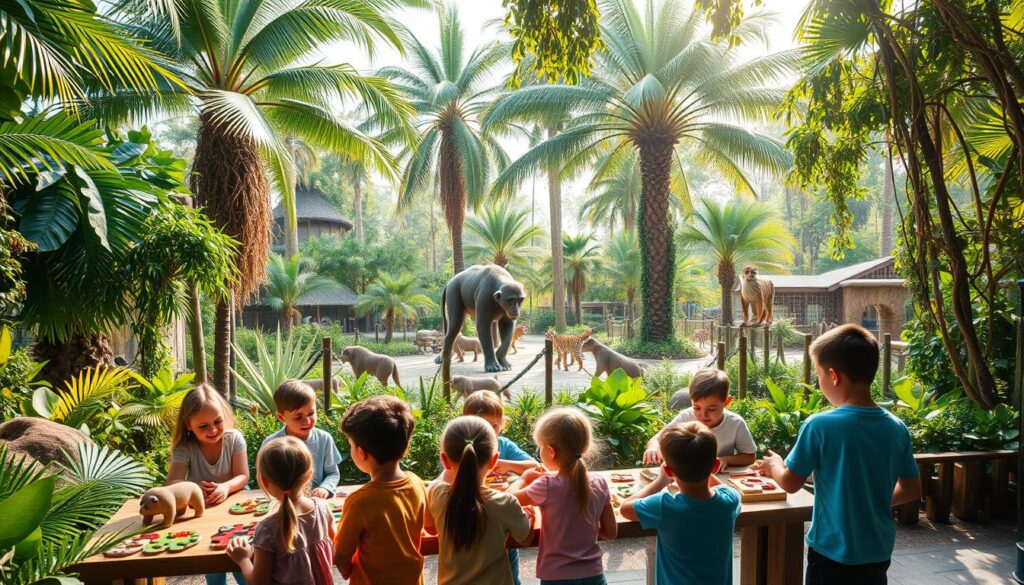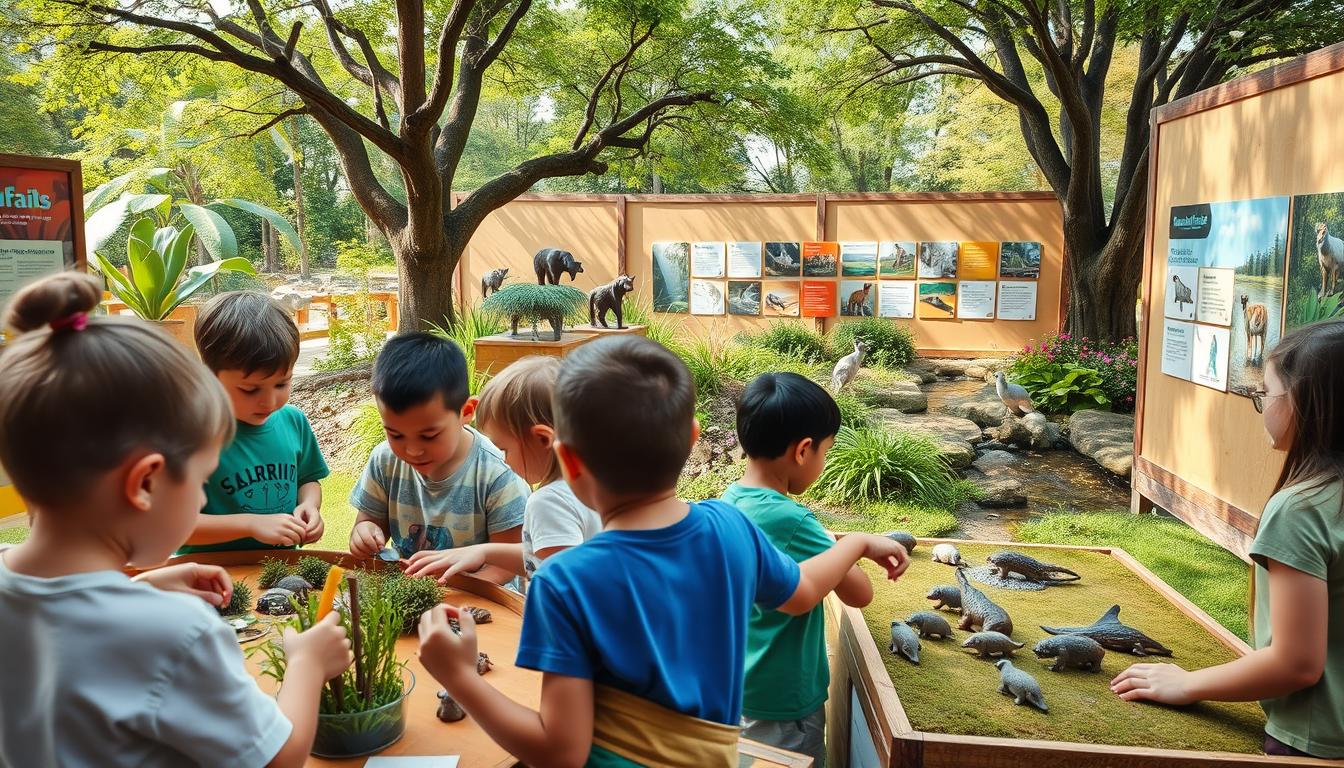Animal-Themed Learning Activities
Last summer, I watched a group of kids at a local zoo huddle around a tortoise enclosure. One boy, no older than six, pointed excitedly as the creature slowly munched lettuce. “Look! He’s eating salad just like Grandma makes!” His observation erupted into giggles, sparking a chain reaction of questions about reptile diets and habitats. That moment captured something magical – animals naturally turn everyday encounters into unforgettable discovery sessions.
Children’s eyes light up when they meet creatures great and small. Whether it’s chasing butterflies in the backyard or imitating elephant trumpets, these interactions do more than entertain. Research shows that early exposure to animals helps kids develop empathy, expands vocabulary through new words like “scales” or “nocturnal,” and builds confidence as they care for classroom pets.
The best part? You don’t need exotic animals to create these moments. A simple bird feeder observation or stuffed animal storytelling session can become powerful tools. These experiences blend play with purpose, helping children understand their world while nurturing skills that last far beyond childhood.
Key Takeaways
- Animal interactions boost language development through new vocabulary and conversation opportunities
- Hands-on activities with creatures improve social-emotional skills like empathy and responsibility
- Simple games and observations can turn everyday moments into educational adventures
- These methods work equally well at home, in parks, or classroom environments
- Early exposure to animals supports cognitive growth and motor skill development
Why Animal-Themed Learning Activities Inspire Kids

Picture a preschooler carefully gluing cotton balls onto a sheep drawing. Their tongue sticks out in concentration while practicing the /sh/ sound. This simple moment reveals how creatures become powerful teaching partners. Kids don’t realize they’re building skills – they’re just having fun with fuzzy friends.
Building Word Power Through Play
Animal noises and names act as language boosters. When children mimic a snake’s “sss” or learn “tadpole” during frog life cycle games, they’re mastering sounds that form reading foundations. A 2022 study found kids using animal flashcards learned 40% more new words than those using abstract shapes.
Role-playing vet clinics or zoos pushes this further. As kids narrate scenarios (“The lion needs medicine!”), they practice proper sentence structure naturally. These interactions turn grammar lessons into adventures rather than chores.
Growing Hearts and Hands Together
Threading cereal onto pipe cleaner caterpillars isn’t just cute – it builds finger muscles for writing. Sorting plastic animals by habitat develops critical thinking. But the magic happens socially too.
When groups care for pretend pets, they negotiate roles and express concerns (“The puppy looks lonely”). This builds empathy alongside coordination. One teacher noted, “Our class guinea pig taught sharing better than any lecture.”
Through creature-centered play, children gain tools for school success while creating joyful memories. The best lessons often come on four legs or wings.
Animal-Themed Learning: Engaging Activities at Home and in the Classroom

Imagine children turning a living room into a savannah, using couch cushions as mountains and blankets as rivers for their stuffed animal adventures. These playful transformations aren’t just fun – they’re stealthy learning opportunities that spark creativity and cognitive growth.
Creative Role-Play and Storytelling
Animal charades get kids moving and thinking. When children stomp like elephants or wiggle like earthworms, they’re building body awareness through play. Add simple props like headbands with ears or fabric scraps for wings, and suddenly they’re creating entire ecosystems.
Storytelling takes flight with animal puppets made from lunch bags or socks. A kindergarten teacher shared:
“Our puppet shows about rainforest creatures tripled vocabulary retention compared to textbook lessons.”
Encourage kids to invent dialogue between characters, fostering language skills and emotional intelligence.
Interactive Games and Puzzle Challenges
Turn snack time into learning with animal-shaped crackers for sorting games. Preschoolers can group them by habitat or leg count, while older kids create food chains. Puzzle activities adapt beautifully too:
| Activity | Skills Developed | Materials Needed |
|---|---|---|
| Animal Track Matching | Observation, Pattern Recognition | Printed paw prints |
| Habitat Memory Game | Critical Thinking, Recall | DIY picture cards |
| Guess the Animal Sound | Auditory Processing, Deduction | Phone/tablet app |
For tech-free options, try mystery animal guessing games. Kids ask yes/no questions (“Does it live in water?”) to identify hidden creature pictures. This builds reasoning skills while teaching animal facts organically.
Hands-On Animal Games for Fun and Education

What happens when playtime becomes a passport to discovery? Transform ordinary spaces into wild adventures where kids explore animal worlds through imaginative role-play. These interactive games blend math, social skills, and habitat knowledge into unforgettable experiences.
Zoo Experiences and Jungle Safaris
Create a bustling zoo with stuffed animals and cardboard box exhibits. Kids can alternate roles as ticket sellers, veterinarians, and curious visitors. Use play money for transactions, sneaking in counting practice. One parent shared: “Our living room safari taught my son more about animal habitats than three library books!”
| Activity | Skills Practiced | Setup Tips |
|---|---|---|
| Animal Feeding Station | Measurement, Fine Motor | Use measuring cups and fake food |
| Habitat Design Challenge | Creativity, Problem-Solving | Provide craft supplies and toy trees |
| Safari Photo Journal | Observation, Writing | Use toy cameras and notebook sheets |
Farm Adventures and Pet Store Play
Turn tables into barnyards with plastic farm animals. Kids learn responsibility by “milking” rubber glove udders or sorting chicken eggs by size. Pet store setups let groups practice customer service while caring for plush puppies and kittens. A preschool director noted: “These games build teamwork faster than any icebreaker activity.”
Extend the fun with simple crafts like painting river rocks as ladybugs or building bird feeders from pinecones. Rotate roles daily so every child experiences different aspects of animal care and commerce.
Conclusion
A child’s cardboard box becomes a bear cave with crayon-drawn claw marks. This simple transformation shows how animal activities spark natural curiosity while teaching real-world concepts. Through pretend play and hands-on exploration, children absorb skills like counting acorn “food portions” or comparing leaf sizes for imaginary habitats.
These experiences work because they meet kids where they are. A toddler stacking plastic monkeys learns balance basics. A second-grader sketching animal life cycles grasps science visually. Teachers and parents can adapt activities using everyday items – paper bag puppets for storytelling or backyard bug hunts for observation practice.
Success lies in celebrating small victories. When a preschooler finally threads cereal onto a pipe cleaner caterpillar, they’ve built both finger muscles and confidence. Each animal sound guessed correctly or habitat sorted properly reinforces cognitive growth through joyful discovery.
Ultimately, these methods turn education into an adventure. As children roar like lions or carefully craft paper plate turtles, they form positive connections with learning that last far beyond childhood. The animal kingdom becomes their classroom – wild, wonderful, and endlessly inspiring.
FAQ
How do animal-themed activities help boost literacy skills?
What motor skills can kids develop through animal play?
What are simple role-play ideas for classrooms or homes?
Are there interactive animal games for group learning?
How do zoo or farm-themed activities teach responsibility?
Can animal games make math concepts easier to learn?

Adam Peter is a finance, travel, and automotive writer with over a decade of experience. He creates clear, practical content to help readers manage their money, explore the world with confidence, and make informed decisions about cars and travel gear. His work blends expert insight with real-world usefulness.




